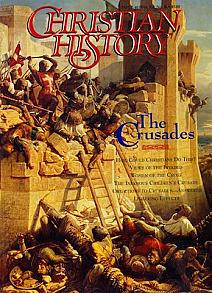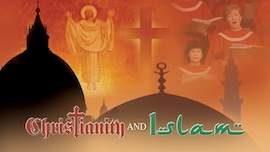God Wills it! Pope Urban Preached the First Crusade
WITHIN EIGHTY YEARS of the death of Mohammed in 632, Muslims had conquered most of the formerly Christian territories of the Middle East, North Africa, and Asia. They controlled Spain and were advancing elsewhere. In those early years, Muslims generally allowed Christians and Jews to observe their religious traditions. However, members of non-Muslim faiths had to pay higher taxes and held lower status.
In the eleventh century, the Seljuk Turks emerged. Tartars from central Asia, they had recently converted to Islam. Their attitude toward other faiths was less tolerant. They conquered much of Christian Asia Minor and extended their rule into the Middle East. Pressed hard by their onslaught, Alexius Comemnus, the Byzantine Emperor, wrote a letter to Pope Urban II pleading for help.
Urban summoned a Council to meet at Clermont, France. There he promoted the concept of a “Truce of God” which would restrain violence in Europe and he called for a crusade against the Islamic oppressors. On this day, 27 November 1095, a great crowd of laymen and clergy gathered in an open field to hear the Pope speak.
Urban described the wretched plight of the Middle East under its new rulers according to his information. He said that churches had been converted to mosques and stables and that Jerusalem was trampled by heathen feet. The persecution and torture of Christians was rampant and Christian women were raped with impunity. Because of constant attacks, pilgrims could not travel in safety. “To whom therefore has the labor of avenging these wrongs and of recovering the territory fallen, if not upon you? You, upon whom above other nations God has conferred remarkable glory in arms, great courage, bodily activity, and strength to humble the hairy scalp of those who resist you.” Urban promised remission of sins to anyone who would join an expedition to free the Holy Land. He reminded his listeners that the church of the West owed its origin to the church of the East. “Advance boldly, as knights of Christ, and rush as quickly as you can to the defense of the Eastern Church,” he urged.
As with a single voice the crowd responded, “God wills it! God wills it!” Urban agreed. God had shown it was indeed his will by uniting their hearts in a single cry, he said, and that cry must become their battle slogan. He commanded them to sew the sign of the cross on their garments. Following the end of the council, Urban confirmed by letter his promise of remission of sins.
Armies of ill-trained peasants set off, most to die a long way from Jerusalem. Some butchered Jews along their path of march. But traveling behind these peasant hordes came a group of professional soldiers who had outfitted themselves at great personal expense. On their long march toward Jerusalem they overcame obstacle after obstacle and internal quarrels. Finally they wrested Jerusalem from Islamic control on 15 July 1099, butchering so many people that (one of their letters claimed) the blood flowed to the horses’ knees by Solomon’s Portico.
—Dan Graves
----- ----- -----
Read Christian History #40, The Crusades
For more about the relationship of Christianity and Islam read Christian History #74, Christians and Muslims
or watch Christianity and Islam at RedeemTV
Christianity and Islam can be purchased at Vision Video








